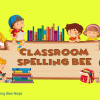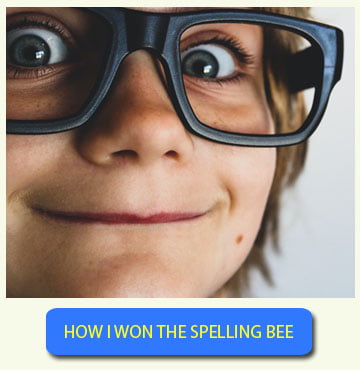Learning English articles can be tricky—even for advanced learners. The small words “a,” “an,” and “the” might seem insignificant, but they play a big role in making English sentences clear, natural, and grammatically correct. In this guide, we’ll break down how articles work, when to use them, and when to leave them out. By the end, you’ll be well on your way to mastering this essential part of English grammar.
What Are Articles?
Articles are determiners used before nouns. They tell us whether a noun is specific or general, known or unknown, and singular or plural. English has two types of articles:
Indefinite articles: a, an
Definite article: the
Let’s look at each in detail.
The Indefinite Articles: “A” and “An”
Indefinite articles are used when you are talking about something non-specific—something the listener or reader does not know exactly which one you are referring to.
When to Use “A” or “An”
Use “a” before words that begin with a consonant sound:
a cat, a book, a university (you-niversity → consonant sound)
Use “an” before words that begin with a vowel sound:
an apple, an hour, an elephant
🔎 Note: It’s about sound, not spelling.
“An honest man” is correct because “honest” starts with a vowel sound (“onest”), even though it begins with “h.”
Examples
I saw a dog in the park. (any dog, not a specific one)
She wants to buy an umbrella. (any umbrella, not a specific one)
He read a book about history.
Special Cases
Abbreviations: Use “a” or “an” depending on pronunciation.
a U.S. company (you-es → consonant sound)
an MBA (em-bee-ay → vowel sound)
The Definite Article: “The”
The definite article “the” is used when referring to something specific, already known, or unique.
When to Use “The”
When the listener knows exactly what you’re talking about:
Please close the door. (We both know which door.)
When you mention something a second time:
I saw a movie yesterday. The movie was amazing!
When there is only one of something:
The sun is shining.
The president will speak tonight.
With superlatives:
She is the best player on the team.
With geographical names:
The United States, the Amazon River, the Alps
Examples
I want to visit the Eiffel Tower. (There’s only one.)
The book on the table is mine.
He is the doctor I was talking about.
When Not to Use Articles
There are times in English when no article is needed, especially with:
Plural Nouns Used Generally
Dogs are friendly. (not “The dogs” or “A dogs”)
Computers have changed our lives.
Uncountable Nouns Used Generally
Sugar is bad for your teeth.
Information is useful.
Proper Nouns
I live in France. (Not “the France”)
She met John at school.
Meals, Languages, and Subjects
We had lunch at noon. (not “a lunch” or “the lunch”)
He speaks Spanish.
She is good at math.
Comparing the Articles
| Example | Explanation |
|---|---|
| I need a pen. | Any pen, not a specific one |
| I need the pen. | A specific pen we both know |
| She’s reading a book. | One of many books |
| She’s reading the book. | A particular book already mentioned |
| He is an artist. | Vowel sound in “artist” |
| He is a musician. | Consonant sound in “musician” |
Tips to Master Articles
1. Start Noticing Patterns
Read and listen to native English material (books, podcasts, videos) and pay attention to how “a,” “an,” and “the” are used. Try to imitate these patterns.
2. Practice Speaking Aloud
When you practice speaking, don’t skip the small words. Train your ear and mouth to use the articles naturally.
3. Write and Review
Write short paragraphs and review them. Are you using articles correctly? Get feedback from a teacher or use grammar checkers.
4. Play Word Games
Games like word puzzles, quizzes, or fill-in-the-blank exercises can reinforce article usage in a fun way.
Articles and ESL Learners
Articles are one of the most common mistakes for English learners, especially those whose native languages don’t use articles at all (e.g., Russian, Japanese, Chinese). It takes time, but consistent practice helps.
Don’t get discouraged by mistakes—native speakers sometimes struggle too.
Use visual aids and examples to associate article use with real-life situations.
Try grammar check tools or mobile apps to test your article skills.
Summary: Article Usage at a Glance
| Article | Use For… | Example |
|---|---|---|
| a | Singular, general noun (consonant sound) | a teacher, a car |
| an | Singular, general noun (vowel sound) | an idea, an hour |
| the | Specific/known nouns, unique things | the sun, the book, the Earth |
| (none) | General plural or uncountable nouns | Dogs bark. Sugar is sweet. |
Exercise 1: Find the Article Errors
Instructions:
Read the following essay and identify 15 incorrect uses of “a,” “an,” or “the.” Then, check your answers in the correction table below.
Incorrect Essay:
Last weekend, I decided to go on hike in countryside. I invited friend to join me. We planned to spend a night camping, so I packed an sleeping bag, a tent, and the stove. My friend brought a guitar and the flashlight. As we walked through forest, we admired beauty of a nature. After hour of walking, we stopped near the river to rest.
We chose spot beneath trees to set up camp. It took us while to assemble tent, but soon we had everything ready. We cooked meal on the fire and sang songs under stars. Suddenly, the owl hooted, and we both jumped! It was unforgettable evening. In a morning, we watched sunrise over hills and enjoyed cup of coffee before heading back home.
Correction Table (Exercise 1):
| # | Incorrect Phrase | Correct Phrase | Explanation |
|---|---|---|---|
| 1 | on hike | on a hike | “Hike” is singular and new — needs “a”. |
| 2 | invited friend | invited a friend | Singular countable noun. |
| 3 | an sleeping bag | a sleeping bag | “Sleeping” starts with a consonant sound. |
| 4 | the stove | a stove | First mention; not specific. |
| 5 | the flashlight | a flashlight | First mention again. |
| 6 | through forest | through the forest | Refers to specific place — requires “the”. |
| 7 | beauty of a nature | beauty of nature | “Nature” is uncountable; no article needed. |
| 8 | After hour | After an hour | “Hour” starts with vowel sound. |
| 9 | chose spot | chose a spot | New spot; indefinite article. |
| 10 | It took us while | It took us a while | Common phrase needs “a”. |
| 11 | assemble tent | assemble the tent | Refers to specific tent. |
| 12 | meal on the fire | meal on a fire | First mention of the fire. |
| 13 | under stars | under the stars | Specific stars in the sky. |
| 14 | In a morning | In the morning | Refers to that morning — specific. |
| 15 | enjoyed cup | enjoyed a cup | “Cup” is countable and introduced here. |
Exercise 2: Fill in the Correct Article
Instructions:
Fill in each blank with “a,” “an,” or “the” where appropriate.
Fill-in-the-Blank Passage:
During ___ weekend trip, we visited ___ ancient castle located near ___ lake. It was surrounded by ___ tall trees and offered ___ stunning view of ___ valley. Inside ___ castle, we found ___ painting and ___ old chest filled with coins. Later, we had lunch under ___ sun and listened to ___ birds singing.
That evening, we set up ___ tent and built ___ fire to keep warm. It was ___ experience we won’t forget.
Answer Key:
a weekend trip
an ancient castle
a lake
tall trees (no article needed if plural non-specific)
a stunning view
the valley
the castle
a painting
an old chest
the sun
the birds
a tent
a fire
an experience
Final Thoughts
Mastering the English articles “a,” “an,” and “the” may take time, but it’s an achievable goal. Understanding when and why to use them helps you communicate clearly and sound more fluent. Keep reading, writing, and practicing—and don’t be afraid to make mistakes. Every time you get it right, you’re one step closer to English mastery.
Do not miss our verification test on article:


